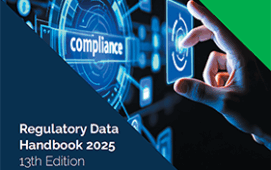Privitar is meeting the privacy by design and default principles of General Data Protection Regulation (GDPR) with innovative data privacy solutions that play not only into regulatory compliance, but also into gaining greater value from data, particularly big data.
The company’s approach to GDPR data privacy requirements is based on risk mitigation provided by two software solutions that anonymise data and are designed to help firms avoid the significant penalties of non-compliance, including fines of up to 4% of global annual turnover, reputational damage and compensation for individual distress.
Privitar Publisher is based on the k-anonymity model to protect privacy and applies a privacy policy geared to an organisation’s requirements to sensitive data. This creates an anonymised copy of the data so that individuals in a dataset cannot be identified, although the data can still be used for analytics, machine learning and sharing with trusted parties.
Privitar Lens is based on differential anonymity and provides an application programming interface (API) that allows sensitive data to be queried without direct access to the data and without disclosure of any individual identities. A series of controls and the addition of behavioural analytics to flag problems and statistical noise to mask signals ensure private data can never be extracted.
Guy Cohen, head of policy at Privitar, says: “Privacy by design means many organisations need to change how they run their business. They need to think about privacy in processes and build privacy into any new processes to ensure they can protect data and provide evidence if anything goes wrong. Privitar can help organisations evaluate their privacy policies and give them tools to mitigate risk.”
While Privitar can help firms working towards the 25 May 2018 compliance deadline for GDPR, it can also support much wider data privacy use cases such as data sharing and collaboration, and insight into an organisation’s own data, market place or a shared platform.
Jason du Preez, CEO at Privitar, explains: “Our goal is to enable privacy preserving data operations while keeping data useful.”
Privitar was established in November 2014 by du Preez, a former executive in Thomson Reuters’ Enterprise Division, and joined by a number of former Thomson Reuters colleagues, including Gerry Buggy and John Robson. Du Preez says: “Our starting principle was that major change over the past few years had enabled organisations to generate and collect big data, mostly about people. This data availability promised advanced analytics and machine learning, which is now beginning to be realised. Organisations with the data also had power, which brought privacy to the forefront among consumers. People are now very conscious of data privacy and want control.”
The company’s product development is based on the relatively new discipline of privacy engineering, which includes technology, architecture and controls, and has been focused on big data, although data of any volume can benefit from Privitar solutions. In terms of big data, Privitar Publisher, by way of example, can be deployed alongside Hadoop, Amazon Cloudera or Microsoft Azure and a privacy policy can be created that is coherent with risk requirements, either internal or external.
To date, Privitar’s data privacy solutions are only available as enterprise software and are targeted at Tier 1 banks, but du Preez does not rule out the possibility of providing a software-as-a-service solution for Tier 2 and smaller organisations. With a customer base of seven blue-chip brands, mostly retail and commercial banks, he concludes: “There is definitely a market for data privacy that allows data to remain useful. The time is right for our proposition.”
Subscribe to our newsletter




